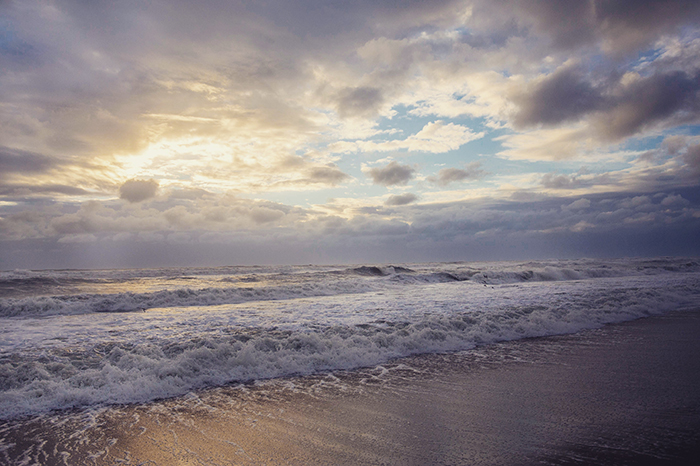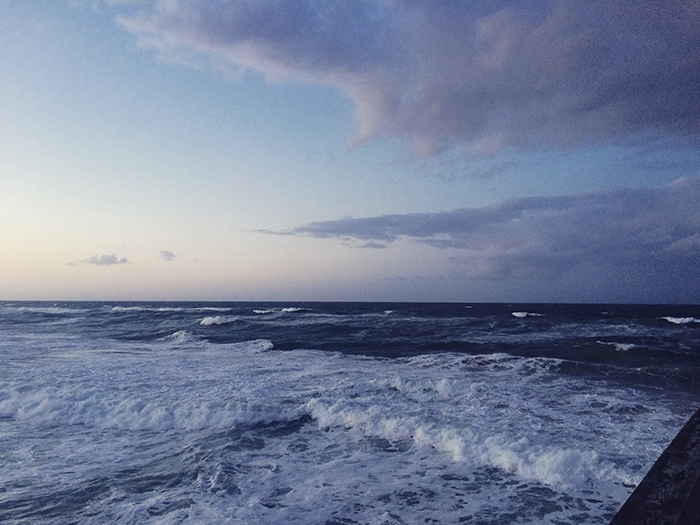Safety on the Beach
Editor’s Note: the Dare County Emergency Management team established a text-to-join group in the Summer of 2018. Subscribe by texting “Join OBXBeachConditions” to 30890 to receive beach related NWS Alerts issued 24 hours a day for the Outer Banks.
Millions of visitors come to the Outer Banks every year to enjoy our beaches and take a dip in the Atlantic Ocean. Swimming in the ocean is generally considered to be safe, but the ocean is a huge, powerful body of water, so there are a couple of things to keep in mind when going to the beach.
If there is one thing that lifeguards reiterate, it is to be aware of rip currents—including what they look like, how and why they form, and what their characteristics are.
Like just about everything in nature, there is not one perfect description that fits all rip currents, but there is a visual pattern. On the Outer Banks (because of its sand bottom and shifting sandbars), a rip will look like a smooth area of water between breaking waves.
It may even look tempting to go in the ocean at that site—there may be 4’ or 5’ surf on either side of what appears to be calm water. Resist the temptation!
The outflowing current is powerful enough to force its way through the waves, flattening the incoming wave action in that section.

So what is happening in an area where a rip current has formed?
Walk out into the sea on a calm day and it’s apparent there are variations in the seabed. Those variations change how waves break; generally, there is more wave action on a sandbar—as surfers know very well. If there is a break in the sandbar, waves will not break at that point, and that deeper point becomes a natural channel for water to flow back out to sea.
As the outflow continues it will deepen and widen the channel, creating a rip current.
There are other factors that can cause a rip current, but on the sandy beaches of the Outer Banks, this is generally what is happening.
The outflow of a rip current is strong enough to push past some wave action, giving the sea within the outgoing water a calm look. People who are experienced at reading the surf know that is a rip current and know the danger it poses.
It is important to note that rip currents do not suck people under that water. The danger exists in the reaction to being caught in one.
There are two strategies for getting out of a rip current: don’t panic, and don’t try to fight the current by swimming directly back to shore.
The most common advice is to swim parallel to the shore until you are out of the rip. The other is to swim with the current until it is past the breakers. Rip currents only exist in the surf zone, so a swimmer in a rip will only be taken so far from shore.
Over the past four or five years, there has been considerable research on the causes of rip currents and how to predict them. As a consequence, the National Weather Service has gotten much better at forecasting the potential for rip currents.
Generally, local lifeguard services use the NWS warnings when they post red flags, although they also do a considerable amount of visual inspecting as well.
Therefore, when the red flags are flying, do not go in the ocean. That cannot be stressed enough. Especially in the summer, a heightened risk of rip current is transitory and very rarely lasts more than a day.

Sit on the beach and enjoy a book, go shopping, check out the remarkable history of the area in our lighthouses, visit Pea Island National Wildlife Refuge. The list of things that can be done on the Outer Banks is endless…just don’t go in the water.
Safety Tips for Enjoying Outer Banks Beaches:
- Do not go in the water if the red flags are flying. In the summer, the red flags fly to warn of rip currents. In other seasons the surf may be too rough.
- Swim by a lifeguard. The towns and Dare and Currituck Counties pride themselves in the professionalism of the lifeguards.
- Always go to the beach with someone or in a group or around other swimmers.
